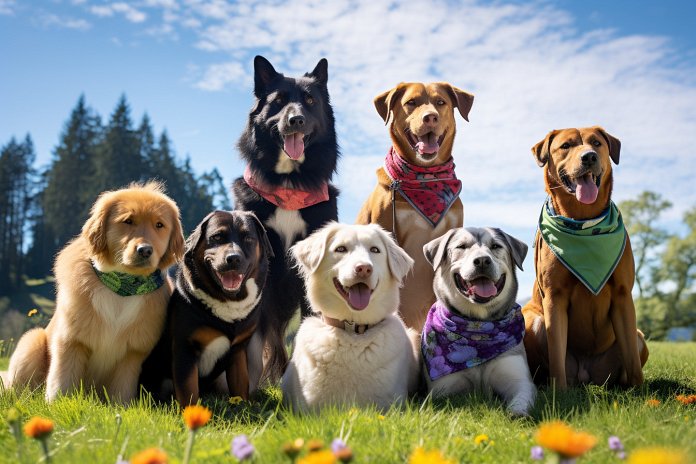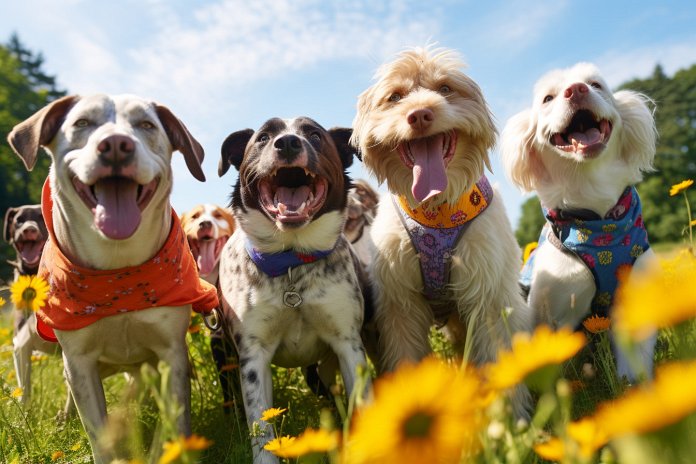
Your dog’s love for smells is a natural instinct that can be developed through training. Dogs with scent detection abilities are valuable assets in various fields, including work, sport, and assistance. They can be trained to track and find bombs, drugs, criminals, wildlife, diseases, and even changes in the human body. Let’s explore how your dog’s instincts and intelligence can be harnessed through training.
Signs Your Dog is Learning a Scent
When your dog is detecting a scent, you can observe certain signs. The first sign is your dog’s focused attention on the new smell. Trained dogs will pull hard and energetically to track and locate the source of the scent. They will go directly to the areas that provide the best intake of sensation. For example, if they are searching for drugs, they will target the luggage lined up for inspection. If they are hunting for quail, they will bound towards the bushes to sniff out the bird.
Other signs that your dog is on a scent include heightened activity and physical tension. They will move quickly and may pull so hard that it’s challenging for the handler to keep up. Some breeds may physically point to the location of the scent, with their nose lunged forward, a paw lifted, and their tail extended. However, different breeds and training methods may result in different signals when the scent is found. For instance, a dog may be trained to bark when someone is about to have a seizure, indicating that they have localized the scent.
Body Language
Here are some signs that indicate your dog is actively following scent detection training:
– Staring
– Alertness
– Barking
– Sniffing
Other Signs
In addition to the above, you may also notice the following signals of scent detection in action:
– Pulling hard on the lead
– Body tension
– Pointing with tail
– Pointing with paw
The History of Dogs Learning Scents
The relationship between humans and dogs began when humans raised wolf pups. Dogs started helping humans with hunting and acting as protectors, eventually becoming companions. Scent detection work with dogs became increasingly important in the mid-twentieth century. The first bomb dogs were used in the 1940s to detect German mines in North Africa. Since then, dogs have been extensively trained to detect explosives, drugs, cadavers, and more. They are also trained to assist individuals with disabilities by detecting serious health crises such as seizures, heart attacks, and even cancer.
The Science Behind the Sniffer
Dogs have an incredible sense of smell, with a nose that serves two purposes – breathing and scent detection. Unlike humans, dogs have a special olfactory organ called the vomeronasal organ, which enhances their sense of smell. Their sense of smell is 10,000 to 10,000,000 times more powerful than humans’. Over time, certain breeds, such as Bloodhounds, Beagles, and German Shepherds, have shown exceptional talent for scent detection. However, any dog can be trained to become a proficient sniffer based on breed, personality, and training opportunities.
Training Your Dog to Detect Scents
You can train your dog to detect scents using positive reinforcement and making training fun. Scent detection trainers often create games that are engaging and progressively increase in complexity. For example, police dogs trained to detect drugs are actually searching for a toy with the scent of drugs. The dog and trainer play hide and seek with the toy, with the dog receiving praise and rewards when successful.
As part of the training, dogs learn how to alert their handlers when they locate a scent. Depending on the situation, dogs may be trained to engage in aggressive alerting, such as pawing and scratching, or passive alerting, like going into a sit. Chaining, a technique that links the alerting behavior to finding the scent, is used to condition the desired behavior. Through repetition and rewards, dogs are taught what to do when they find the scent.
By understanding your dog’s natural instincts and intelligence, you can unlock their potential as a scent detection companion. Training can enhance their abilities and enable them to assist in various fields, making dogs powerful allies in helping mankind.
“Unleash the power of your dog’s nose – from tracking scents to saving lives!”

Tips & Things to Know
1️⃣ Recognize the signs that your dog is learning a scent: Look for focused attention, increased activity and physical tension, and specific body signals such as pointing or lunging forward.
2️⃣ Understand your dog’s body language during scent detection: Watch for signs like pulling hard on the lead, body tension, pointing with the tail or paw, and heightened sniffing.
3️⃣ Know the history and science behind scent detection: Dogs have been trained for scent detection for various purposes, including detecting bombs, drugs, diseases, and allergens. Dogs have a powerful sense of smell due to their special olfactory organ, and certain breeds are more adept at scent detection. Training your dog to detect scents involves positive reinforcement and interactive games.
Frequently Asked Questions, Answered ✅
1. What are some examples of scents that dogs can be trained to detect?
– Dogs can be trained to detect bombs and explosives, chemicals and drugs, criminals, wildlife, cadavers, disease, and changes in the human body such as cancer and seizures.
2. How can you tell if your dog is actively following a scent?
– Signs that your dog is actively following a scent include focused attention, pulling hard on the lead, heightened activity and physical tension, and specific body language such as pointing with the tail or paw.
3. What is the history of dogs being trained for scent detection?
– Dogs have been used for scent detection since the mid-twentieth century, starting with bomb dogs in the 1940s. They have since been trained to identify explosives, illegal drugs, and even detect health issues such as cancer and seizures.
4. How does a dog’s sense of smell differ from humans?
– Dogs have a special olfactory organ called the vomeronasal organ, which makes their sense of smell 10,000 to 10,000,000 times more powerful than humans. They also take in smells separately from each nostril.
5. How can you train your dog to detect scents?
– Training your dog to detect scents involves using positive reinforcement, such as praise and treats, to reward desired behaviors. Trainers often use games and play to make the training fun for the dog, and some dogs are trained using toys scented with the target odor. Different alerting behaviors are taught depending on the type of scent being detected, such as scratching for drugs and passive alerting for bombs.